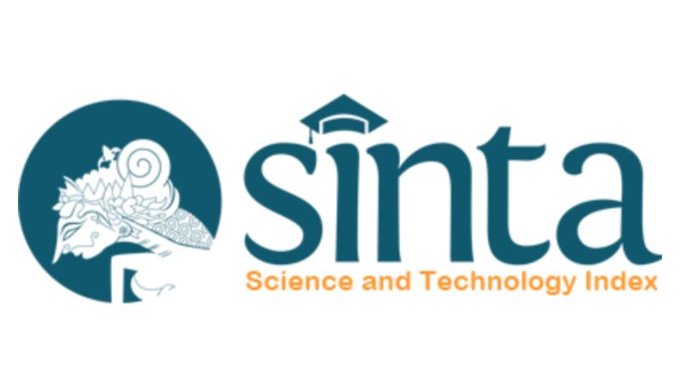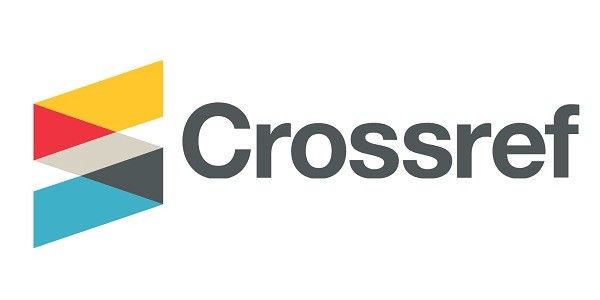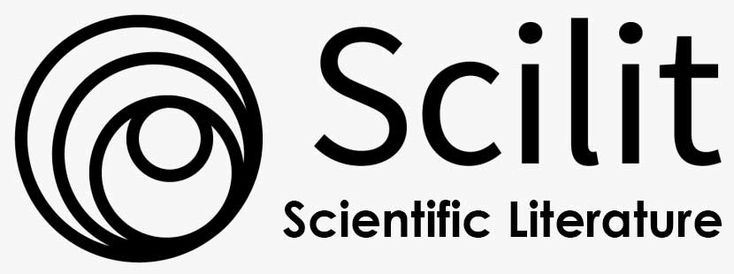Drug Repurposing Option for COVID-19 with Structural Bioinformatics of Chemical Interactions Approach
DOI:
https://doi.org/10.55175/cdk.v47i3.359Keywords:
Anti-malaria, anti-viral, COVID-19, protease, SARS-CoV2Abstract
The SARS-CoV-2 virus is the pathogenic agent that caused the COVID-19 disease. The epicenter of this disease is the city of Wuhan, China. It is already categorized as “pandemic” by WHO, as many countries already affected with the infections, including recently Indonesia. Although the standard RT-PCR and DNA sequencing protocols has already developed for diagnostic, no drugs are available to cure this disease until today. The anti-malaria drug of chloroquine phosphate was repurposed, as well as other anti-viral drugs. In this regard, a structural bioinformatics pipeline was utilized to validate the claim in the computational realm. Within the sphere of the online molecular docking method, it was found that all the tested repurposed drugs attached accordingly with the SARS-CoV-2 protease enzyme that plays a role in viral replication. The repurposed drugs could be proposed as drug candidates for COVID-19, after clinical trials or further laboratory testing.
Virus SARS-CoV-2 adalah patogen penyebab penyakit COVID-19. Episentrum penyakit ini adalah kota Wuhan, Tiongkok. WHO mengeluarkan peringatan ‘pandemi’ karena banyak negara sudah terkena infeksi, termasuk Indonesia. Meskipun protokol RT-PCR dan sekuensing DNA standar telah dikembangkan untuk tujuan diagnostik, hingga saat ini tidak ada obat untuk menyembuhkan penyakit ini. Obat anti-malaria chloroquine phosphate dicoba, bersama dengan beberapa obat anti-virus. Alur analisis bioinformatika struktural digunakan untuk validasi di ranah komputasi. Dalam lingkup metode molecular docking secara online, ditemukan bahwa obat tersebut tertambat dengan enzim protease SARS-CoV-2 yang berperan dalam replikasi virus. Obat ini dapat diusulkan sebagai kandidat obat untuk COVID-19, setelah pengujian laboratorium dan uji klinis lebih lanjut.
Downloads
References
WHO. Coronavirus disease 2019. World Heal Organ [Internet]. 2020 [cited 2020 Mar 6];2019:2633. Available from: https://www.who.int/emergencies/diseases/novel-coronavirus-2019
WHO. Coronavirus. Health Topics [Internet]. 2020 [cited 2020 Mar 10]. Available from: https://www.who.int/health-topics/coronavirus
Salazar PM De, Niehus R, Taylor A, Buckee CO, Lipsitch M. Using predicted imports of 2019-nCoV cases to determine locations that may not be identifying all imported cases. medRxiv [Internet]. 2020 Feb 11 [cited 2020 Feb 28];2020.02.04.20020495. Available from: http://dx.doi.org/10.1101/2020.02.04.20020495
WHO. Situation reports [Internet]. 2020 [cited 2020 Mar 6]. Available from: https://www.who.int/emergencies/diseases/novel-coronavirus-2019/situation-reports/
Kemenkes-RI. Home » Info infeksi emerging Kementerian Kesehatan RI [Internet]. 2020 [cited 2020 Mar 10]. Available from: https://infeksiemerging.kemkes.go.id/
Shen KL, Yang YH. Diagnosis and treatment of 2019 novel coronavirus infection in children: A pressing issue. World J Pediatrics. Institute of Pediatrics of Zhejiang University; 2020. p. 1–3.
PCC. Cuban medication interferon alpha selected among drugs to combat coronavirus › World › Granma - Official voice of the PCC [Internet]. 2020 [cited 2020 Mar 10]. Available from: http://en.granma.cu/mundo/2020-02-10/cuban-medication-interferon-alpha-selected-among-drugs-to-combat-coronavirus
Lu H. Drug treatment options for the 2019-new coronavirus (2019-nCoV). Biosci Trends [Internet]. 2020 Jan 28 [cited 2020 Feb 11];2020.01020. Available from: https://www.jstage.jst.go.jp/article/bst/advpub/0/advpub_2020.01020/_article
Liu X, Zhang B, Jin Z, Yang H, Rao Z. The crystal structure of COVID-19 main protease in complex with an inhibitor N3 (wwPDB: 6LU7) [Internet]. RCSB webpage. 2020 [cited 2020 Mar 6]. Available from: https://www.wwpdb.org/pdb?id=pdb_00006lu7
Pushpakom S, Iorio F, Eyers PA, Escott KJ, Hopper S, Wells A, et al. Drug repurposing: Progress, challenges and recommendations. Nat Rev Drug Discovery. 2018;18:41–58.
Cha Y, Erez T, Reynolds IJ, Kumar D, Ross J, Koytiger G, et al. Drug repurposing from the perspective of pharmaceutical companies. Br J Pharmacol 2018;175:168–80.
Brusic V. The growth of bioinformatics. Briefings in Bioinformatics [Internet]. 2007 Dec 19 [cited 2016 Sep 6];8(2):69–70. Available from: http://bib.oxfordjournals.org/cgi/doi/10.1093/bib/bbm008
Valeska MD, Adisurja GP, Bernard S, Wijaya R, Aldino M, Parikesit AA. The role of bioinformatics in personalized medicine: Your future medical treatment. Cermin Dunia Kedokt [Internet]. 2019;46(12):785–8. Available from: http://www.kalbemed.com/DesktopModules/EasyDNNNews/DocumentDownload.ashx?portalid=0&moduleid=471&articleid=901&documentid=1012
Roy K, Kar S, Das RN, Roy K, Kar S, Das RN. Background of QSAR and Historical Developments. In: Understanding the Basics of QSAR for Applications in Pharmaceutical Sciences and Risk Assessment. Elsevier [Internet]. 2015 [cited 2018 May 21]:1–46. Available from: http://linkinghub.elsevier.com/retrieve/pii/B9780128015056000016
Moroy G, Martiny VY, Vayer P, Villoutreix BO, Miteva MA. Toward in silico structure-based ADMET prediction in drug discovery. Drug Discov Today [Internet]. 2012 Jan [cited 2013 Mar 2];17(1–2):44–55. Available from: http://www.ncbi.nlm.nih.gov/pubmed/22056716
Oprea TI. Virtual screening in lead discovery: A viewpoint. Molecules [Internet]. 2002 Jan 31 [cited 2013 Mar 18];7(1):51–62. Available from: http://www.mdpi.com/1420-3049/7/1/51
Parikesit AA, Nurdiansyah R. The challenge of protein domain annotation with supervised learning approach: A systematic review. J Mat Sains [Internet]. 2019 Sep 30 [cited 2019 Oct 1];24(1):1–9. Available from: https://jms.fmipa.itb.ac.id/index.php/jms/article/view/775
Knox C, Law V, Jewison T, Liu P, Ly S, Frolkis A, et al. DrugBank 3.0: A comprehensive resource for “omics” research on drugs. Nucleic Acids Res. 2011;39: 1035–41.
Lagunin A, Stepanchikova A, Filimonov D, Poroikov V. PASS: Prediction of activity spectra for biologically active substances. Bioinformatics [Internet]. 2000 Aug 1 [cited 2014 Sep 13];16(8):747–8. Available from: http://bioinformatics.oxfordjournals.org/content/16/8/747
Berman HM, Kleywegt GJ, Nakamura H, Markley JL. The future of the protein data bank. Biopolymers [Internet]. 2013 Mar [cited 2015 Jun 11];99(3):218–22. Available from: http://www.pubmedcentral.nih.gov/articlerender.fcgi?artid=3684242&tool=pmcentrez&rendertype=abstract
Laskowski RA, MacArthur MW, Moss DS, Thornton JM. PROCHECK: A program to check the stereochemical quality of protein structures. J Appl Crystallogr [Internet]. 1993. Available from: https://www.scienceopen.com/document?vid=02128bdc-937a-4aff-a484-1168a4fa86ff
Schneidman-Duhovny D, Inbar Y, Nussinov R, Wolfson HJ. PatchDock and SymmDock: Servers for rigid and symmetric docking. Nucleic Acids Res [Internet]. 2005 Jul 1 [cited 2019 Nov 7];33(SUPPL. 2):W363-7. Available from: http://www.ncbi.nlm.nih.gov/pubmed/15980490
Wallace AC, Laskowski RA, Thornton JM. Ligplot: A program to generate schematic diagrams of protein-ligand interactions. Protein Eng Des Sel [Internet]. 1995 Feb 1 [cited 2019 Nov 7];8(2):127–34. Available from: https://academic.oup.com/peds/article-lookup/doi/10.1093/protein/8.2.127
Laskowski RA, Swindells MB. LigPlot+: Multiple ligand-protein interaction diagrams for drug discovery. J Chem Inf Model. 2011;51(10):2778–86.
Alonso H, Bliznyuk AA, Gready JE. Combining docking and molecular dynamic simulations in drug design. Med Res Rev [Internet]. 2006 Sep 1 [cited 2012 Oct 3];26(5):531–68. Available from: http://www.ncbi.nlm.nih.gov/pubmed/16758486
Parikesit AA, Nurdiansyah R. Supplementary material for the project: Drug repurposing option for COVID-2019 with structural bioinformatics of chemical interactions approach (Mendeley Data V2) [Internet]. Jakarta: I3L; 2020. Available from: http://dx.doi.org/10.17632/sw43d9g2r6.2
Liang T. Handbook of COVID19 prevention and treatment [Internet]. Zhenjiang; 2020. Available from: https://covid-19.alibabacloud.com
Downloads
Published
How to Cite
Issue
Section
License
Copyright (c) 2020 Cermin Dunia Kedokteran

This work is licensed under a Creative Commons Attribution-NonCommercial 4.0 International License.





















